Abstract
Beginning approximately 4 years after the Chernobyl nuclear accident a steady increase in the incidence of thyroid cancer was observed in children and adolescents of the Bryansk Oblast, which received the highest level of radionuclide contaminants in Russia. We examined the spatial relationship between the residence location of patients with identified thyroid cancer (0-18 years old at the time of the accident) and a number of geographic parameters to better account for the etiology of thyroid cancer spatial distribution. Geographic parameters analyzed included spatial distribution of 137Cs and 131I in soil, population demographics, measurements and reconstructions. of absorbed thyroid 131I doses in the population, and maps of major transportation arteries. An interesting finding is the lack of a consistent correlation between the spatial distribution of radionuclides in the soil and thyroid cancer incidence. Instead, most of the thyroid cancer cases were diagnosed in settlements situated on major railways and roads. Correlating population with thyroid cancer cases and transportation arteries reveals a much higher cancer rate on or near major roads and railways than at a distance from them, again independent of radionuclide soil concentration. There are other important factors, of course, that must be considered in future evaluations of this phenomenon. These include the influence of iodine endemic zones, genetic predisposition to thyroid cancer, and duration of residence time in contaminated areas. The feasibility of radionuclide transport on railways and roads is discussed, together with the vectors for transfer of the contaminants to the human population. Developing a model to reconstruct the radiation dose to the thyroid over time in this geographic region is proposed in light of the impact of transportation arteries. Specific studies are outlined to provide the data necessary to develop this model as well as to better characterize the feasibility and scientific validity of the contribution to human health effects of this transport factor. Transport factor refers to the transport of radionuclides on transportation arteries and the transfer of these agents to the human population residing in the vicinity of these arteries. If the impact on thyroid cancer of the transport of radionuclides on major railways and roads is indeed significant, a major reappraisal of the risk of large-scale radioactive release into the environment is necessary.
Full text
PDF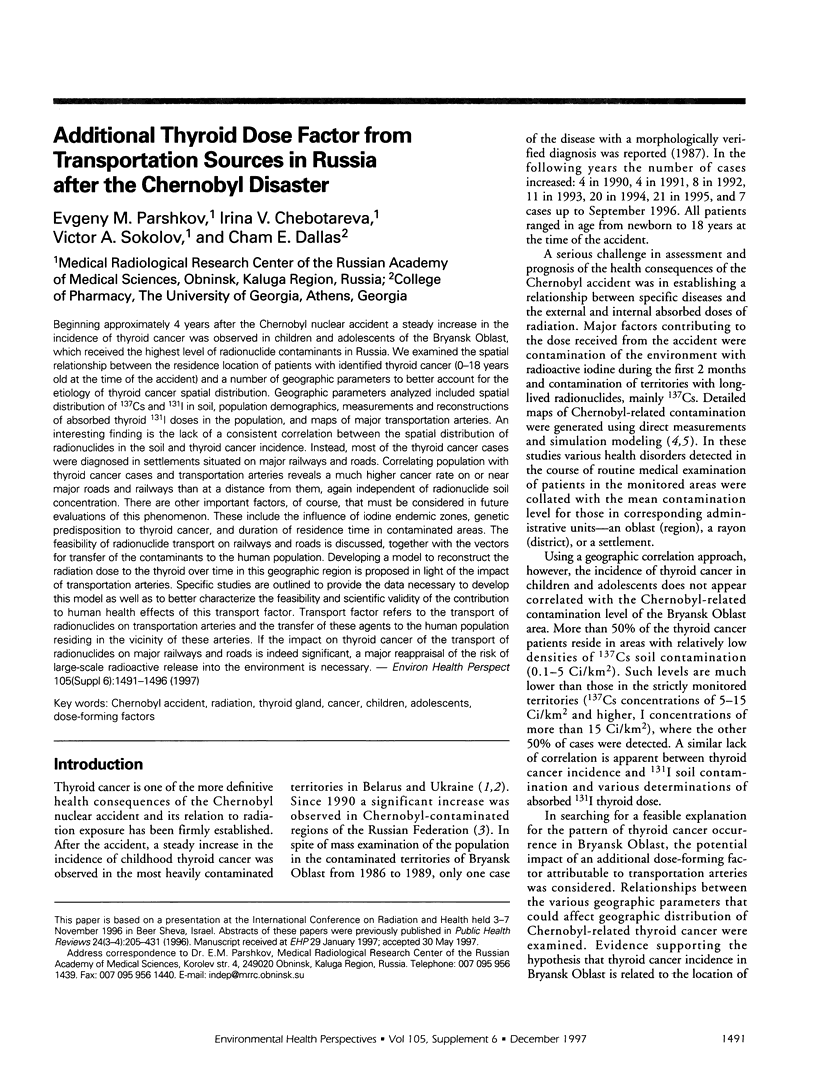
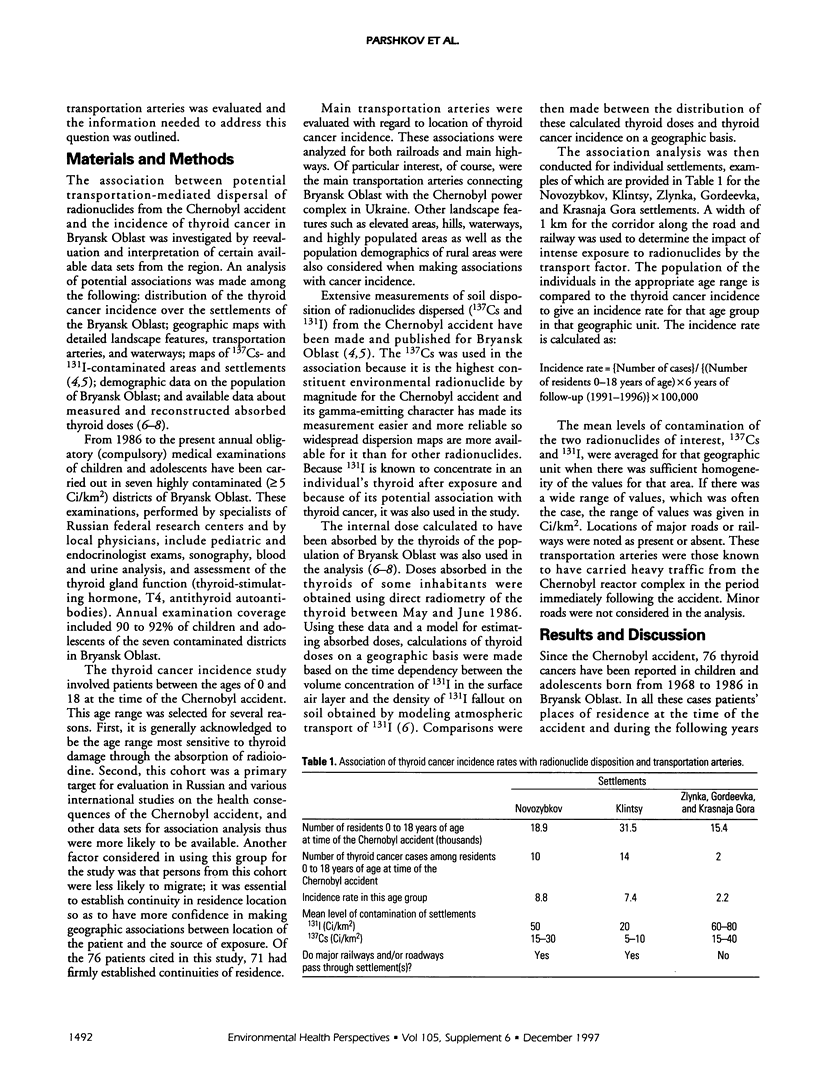
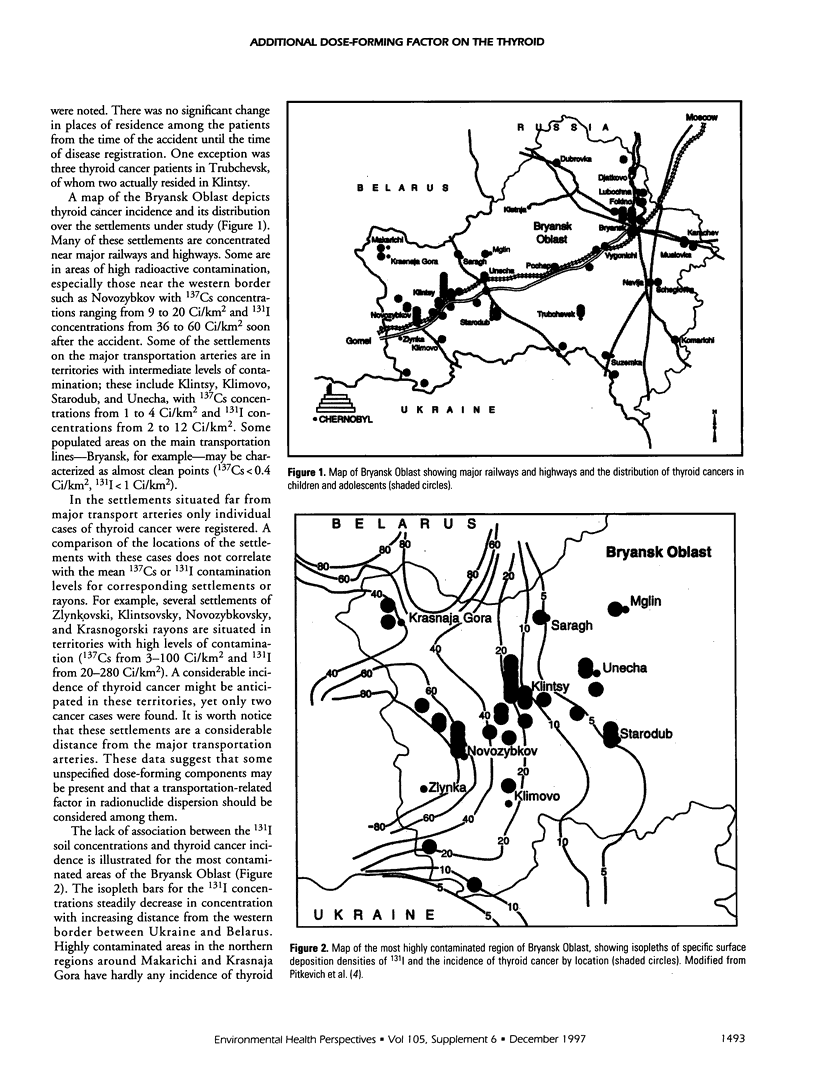
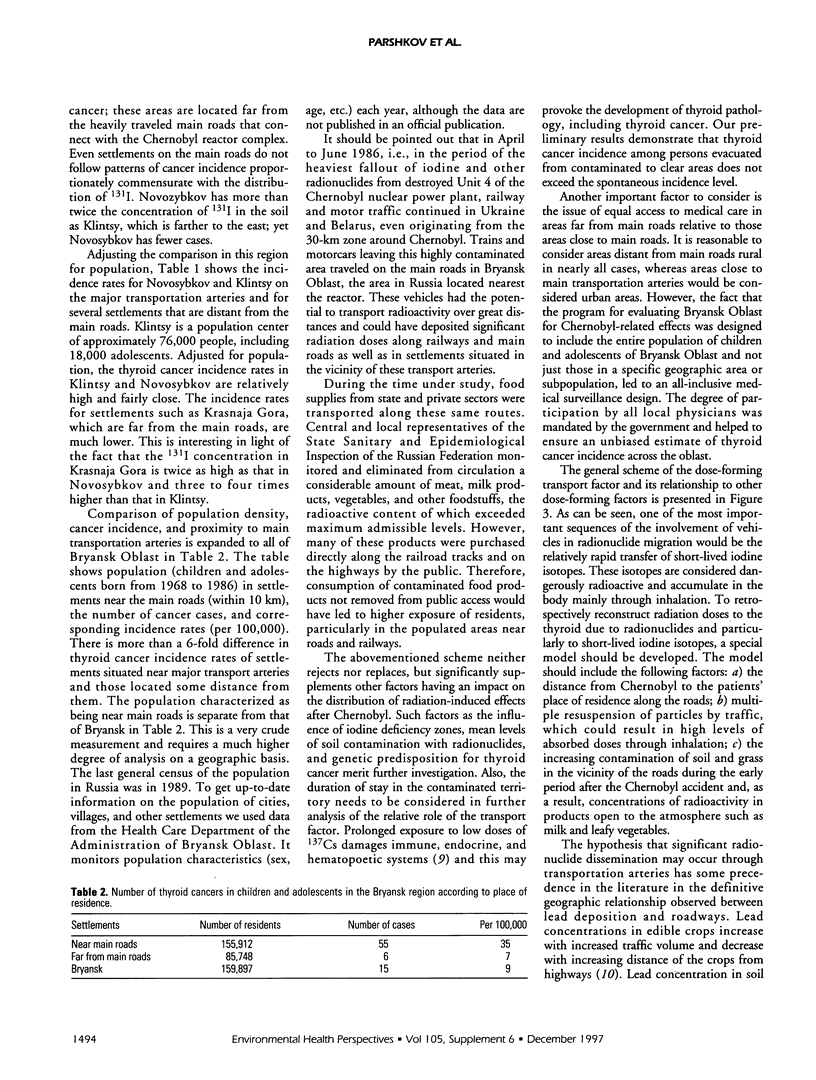
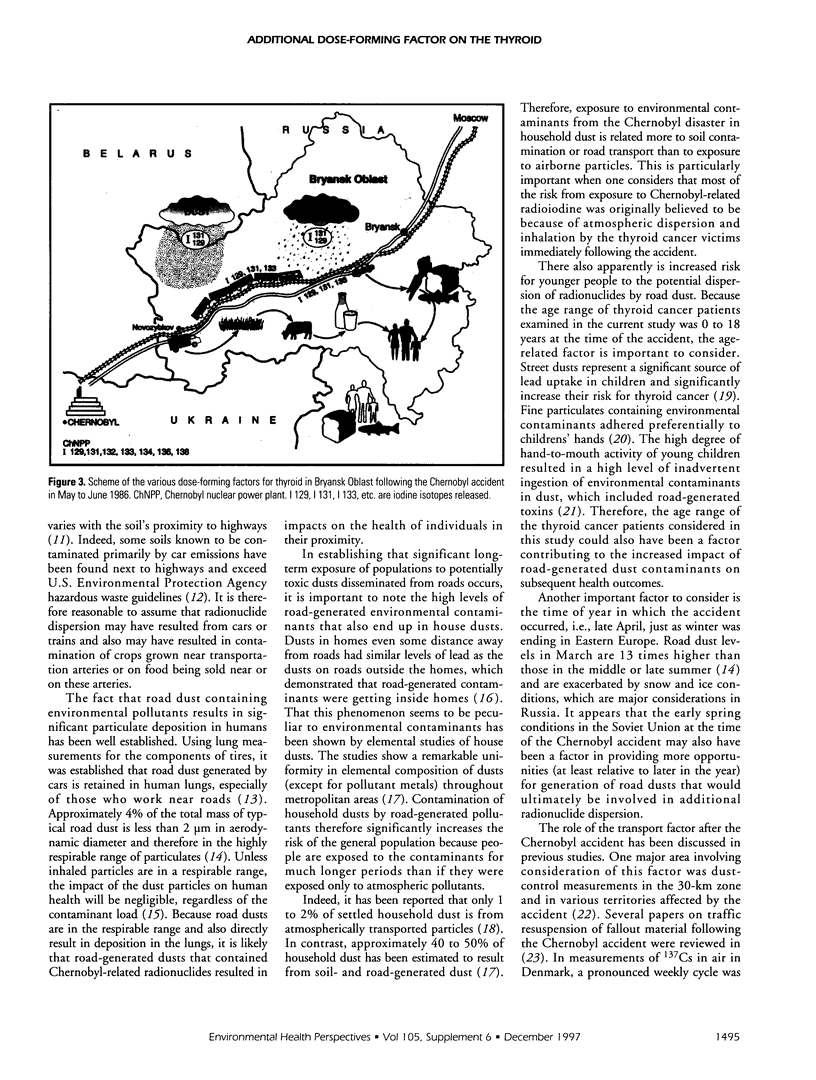
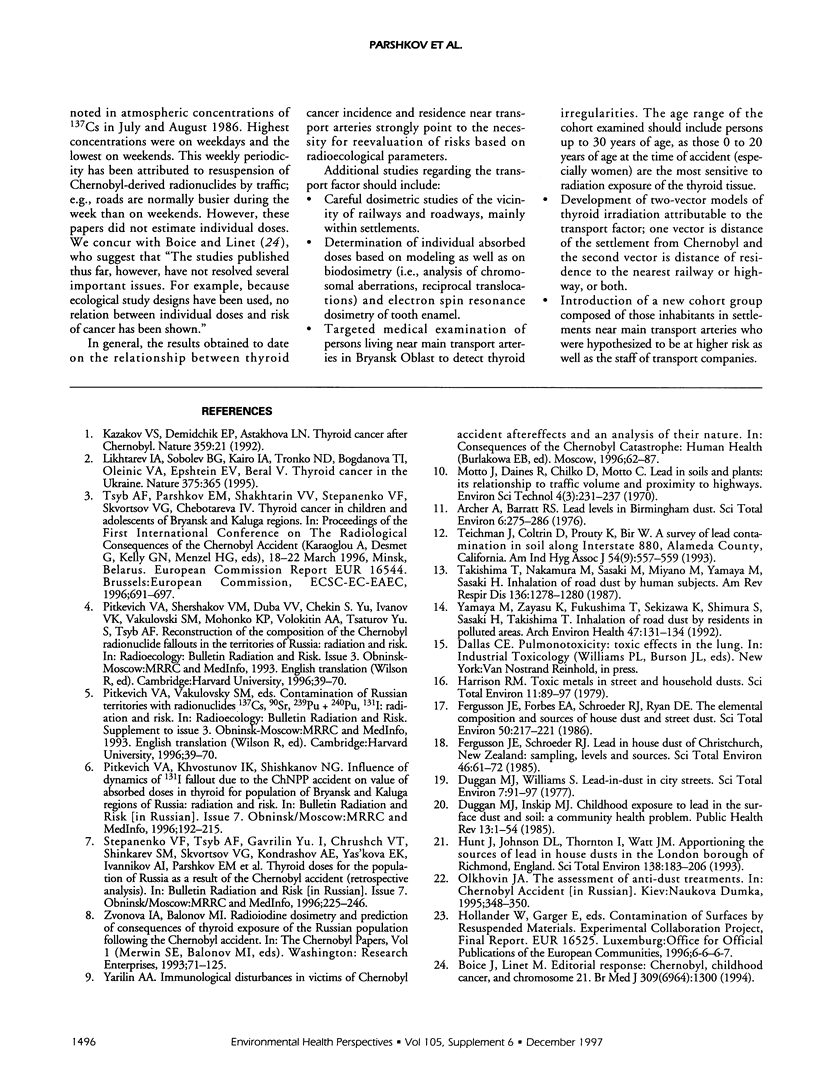
Selected References
These references are in PubMed. This may not be the complete list of references from this article.
- Ambach W. Fallout from Chernobyl. Studies may have had inadequate statistical power. BMJ. 1994 Nov 12;309(6964):1300–1301. [PMC free article] [PubMed] [Google Scholar]
- Archer A., Barratt R. S. Lead levels in Birmingham dust. Sci Total Environ. 1976 Nov;6(3):275–286. doi: 10.1016/0048-9697(76)90037-1. [DOI] [PubMed] [Google Scholar]
- Duggan M. J., Inskip M. J. Childhood exposure to lead in surface dust and soil: a community health problem. Public Health Rev. 1985;13(1-2):1–54. [PubMed] [Google Scholar]
- Duggan M. J., Williams S. Lead-in-dust in city streets. Sci Total Environ. 1977 Jan;7(1):91–97. doi: 10.1016/0048-9697(77)90019-5. [DOI] [PubMed] [Google Scholar]
- Fergusson J. E., Schroeder R. J. Lead in house dust of Christchurch, New Zealand: sampling, levels and sources. Sci Total Environ. 1985 Nov;46:61–72. doi: 10.1016/0048-9697(85)90283-9. [DOI] [PubMed] [Google Scholar]
- Harrison R. M. Toxic metals in street and household dusts. Sci Total Environ. 1979 Jan;11(1):89–97. doi: 10.1016/0048-9697(79)90036-6. [DOI] [PubMed] [Google Scholar]
- Hunt A., Johnson D. L., Thornton I., Watt J. M. Apportioning the sources of lead in house dusts in the London borough of Richmond, England. Sci Total Environ. 1993 Sep 30;138(1-3):183–206. doi: 10.1016/0048-9697(93)90414-2. [DOI] [PubMed] [Google Scholar]
- Kazakov V. S., Demidchik E. P., Astakhova L. N. Thyroid cancer after Chernobyl. Nature. 1992 Sep 3;359(6390):21–21. doi: 10.1038/359021a0. [DOI] [PubMed] [Google Scholar]
- Likhtarev I. A., Sobolev B. G., Kairo I. A., Tronko N. D., Bogdanova T. I., Oleinic V. A., Epshtein E. V., Beral V. Thyroid cancer in the Ukraine. Nature. 1995 Jun 1;375(6530):365–365. doi: 10.1038/375365a0. [DOI] [PubMed] [Google Scholar]
- Takishima T., Nakamura M., Sasaki M., Miyano M., Yamaya M., Sasaki H. Inhalation of road dust by human subjects. Am Rev Respir Dis. 1987 Nov;136(5):1278–1280. doi: 10.1164/ajrccm/136.5.1278. [DOI] [PubMed] [Google Scholar]
- Teichman J., Coltrin D., Prouty K., Bir W. A. A survey of lead contamination in soil along Interstate 880, Alameda County, California. Am Ind Hyg Assoc J. 1993 Sep;54(9):557–559. doi: 10.1080/15298669391355035. [DOI] [PubMed] [Google Scholar]
- Yamaya M., Zayasu K., Fukushima T., Sekizawa K., Shimura S., Sasaki H., Takishima T. Inhalation of road dust by residents in polluted areas. Arch Environ Health. 1992 Mar-Apr;47(2):131–134. doi: 10.1080/00039896.1992.10118766. [DOI] [PubMed] [Google Scholar]


